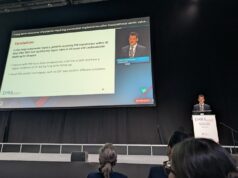 Ischaemic strokes in atrial fibrillation (AF) patients are less often disabling or fatal if they have been treated with left atrial appendage closure procedure (LAAC) compared to being treated with direct oral anticoagulants (DOACs), research published in JACC: Clinical Electrophysiology has shown.
Ischaemic strokes in atrial fibrillation (AF) patients are less often disabling or fatal if they have been treated with left atrial appendage closure procedure (LAAC) compared to being treated with direct oral anticoagulants (DOACs), research published in JACC: Clinical Electrophysiology has shown.
This is the finding of a retrospective analysis performed by Mohit K Turagam (Icahn School of Medicine at Mount Sinai, New York, USA), described by the researchers as the largest of its kind comparing outcomes of strokes from a blood clot from the heart in AF patients treated with LAAC versus blood thinners.
Using registries from eight heart centres across the USA and Europe, the researchers compared 322 patients who had stroke from a blood clot in the heart while receiving blood thinners with 125 patients who had a stroke after having LAAC. Researchers used a Rankin Scale to assess severity of patient strokes and analysed stroke severity right before patients were discharged from the hospital following a stroke, and then again at three months after the stroke.
The research team found that patients who had a stroke while taking blood thinners had a 70.3% incidence of having disabling symptoms or dying at discharge, compared to 38.3% incidence among patients who had LAAC.
They also report that the incidence was lower for the LAAC group at three months after discharge at 33.3%, compared to 56.2% for the blood thinner patients. Analysis showed that patients who underwent LAAC had a 78% lower risk of having complications from a disabling stroke when compared to those on blood thinners at the time of hospital discharge, and 72% lower risk three months after hospital discharge.

“Despite a higher baseline risk profile, left atrial appendage closure related ischaemic strokes were less severe and less fatal than with direct-oral anticoagulants,” said Turagam. “The mechanism(s) of these stroke severity differences is unknown. This analysis partially explains the emerging data identifying a mortality benefit of LAAC over direct-oral anticoagulant therapy. These are important data to reflect upon by patients and clinicians alike when considering options for AF stroke prophylaxis.”
The findings should provide reassurance on the safety and effectiveness of LAAC in AF patients who are at high-risk of bleeding with blood thinners, the research team suggest.
“Both of these strategies, LAAC and blood thinners, are overall effective in preventing stroke in patients with AF, but strokes can infrequently still occur with either prevention strategy,” corresponding author Vivek Reddy, (Icahn School of Medicine at Mount Sinai, New York, USA) adds. “These data indicate that these breakthrough strokes are considerably worse when they occur while taking blood thinners—the strokes are more severe and more often fatal—than after LAAC.”












